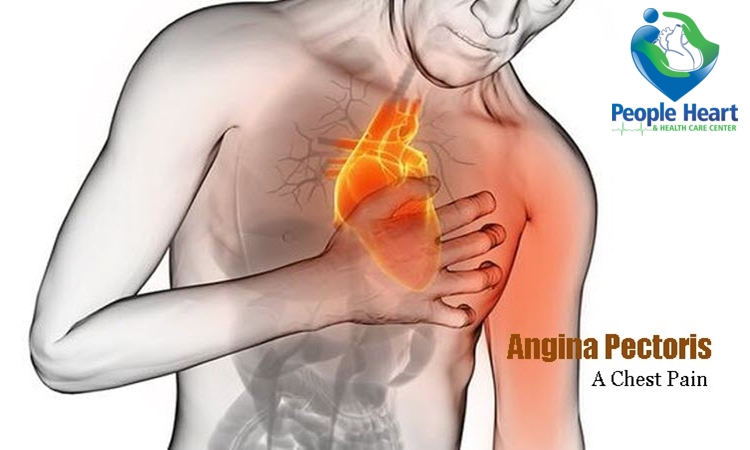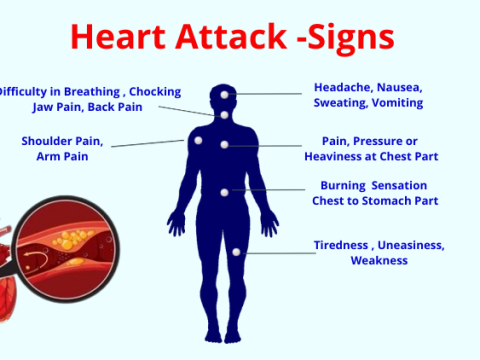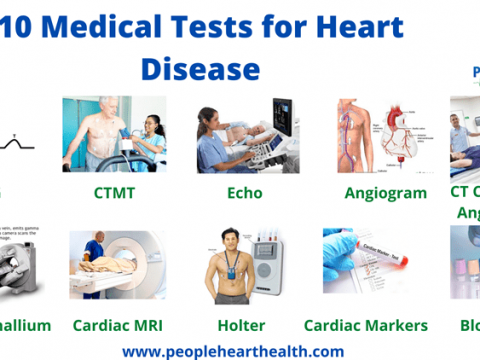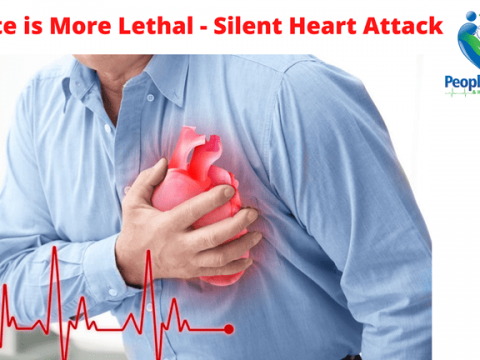
Stress becomes a Major for Heart Disease these Days | Know How
October 13, 2020
What is Heart-Attack, Types of Heart Attack, Get to Know
October 23, 2020Angina is the complaint or feelings of the heart patients when they have shortage of blood supply in the heart. It only occurs when heart’s oxygen need becomes more than the supply. This may be called cry of the heart for more blood or oxygen. It may not always leave sided chest pain but it may also be pressure on the chest, breathlessness, chocking or palpitation. These symptoms happen after the heart tubes gets chocked / blocked with fatty materials called Cholesterol and Triglycerides.
When a person is at rest his / her heart is beating in a very slow speed and the blood supply (which supplies oxygen to the heart muscle) requirement is about 10%. So, even 90% blockage in the supply tubes (called Coronary arteries) may not give angina. But when the heart rate increases the blood supply need becomes more 20% to 30%. So, angina will only be possible if the blockages exceed 70-80%. So, angina is mostly felt when the patient is exerting or walking or doing more physical work.
There are crores of angina patients in India and the numbers are increasing day by day. If angina is not prevented or treated it may lead to heart attack, which is responsible for deaths of many heart patients per year in India itself. Due to bad life style people have now heart disease or angina in young age also.
What are the Symptoms of angina?
- Chest Pain- This may vary from mild to severe, whereas the pain of heart attack is very severe. It usually occurs in the centre of the chest and radiates to the left arm, but at times it may even radiate to the right arm, shoulder or the left jaw. The pain usually last for 5-10 minutes.
- Breathlessness or shortness of breath.
- Sweating.
- Nausea and vomiting.
- Dizziness and fainting
- Pain or heaviness in the chest specially after heavy meals.
- Chocking sensation in the throat.
- Heaviness in the chest or upper abdomen
- Weakness and fatigue.
What are different types or classification of angina?
The significant sorts of angina are steady, unsteady, variant (prinzmetal’s) and microvascular. Realizing how the sorts vary from one another is significant. This is because they have various symptoms and require various medicines.
- Stable Angina – It is the most widely recognized sort. It happens when the heart is working harder than expected. There is a regular pattern to stable angina. After several episodes, you figure out recognize the pattern, and can predict when it will happen. After taking your heart medicines, the pain usually turned off in a few minutes. Persons who have stable angina are prone to have a heart attack in the future.
Physical exertion is the most common cause of pain and discomfort for stable angina. Severely narrowed arteries may allow enough blood to reach the heart when the demand for oxygen is low such as sitting. But with exertion, like climbing stairs or brisk walking, the heart works harder and needs more oxygen. Other causes include emotional stress, exposure to very hot or cold temperatures, heavy meals and smoking.
2. Unstable Angina – It is a very dangerous condition that requires emergency treatment. It is a sign that a heart attack could occur soon. Unlike stable angina, it does not follow a pattern. It can occur without physical exertion and it is not relieved by rest or medicine. Unstable angina is caused by blood clots that partially or totally block an artery. If plaque in an artery ruptures or break open, blood clots may form. This creates a larger blockage. The clot may grow large enough to complete block the artery and cause a heart attack. Blood may form partly dissolve, and later form again. Chest pain can occur each time a clot blocks an artery. Unstable angina often occurs at rest, while resting around evening time, or with minimal physical exertion.
3. Variant Angina – Variant angina is rare. It usually occurs at rest. The pain can be severe and usually occurs between midnight and early morning. It is relieved by medicine. Variant angina is caused by a spasm in a coronary artery. The spasm causes the walls of the artery to tighten. This narrows the artery, causing the blood flow to the heart to slow or stop. Variant angina may occur in people with or without exertion. Other causes of spasms in the arteries that supply the heart with blood are exposure to cold, emotional stress, medication that constrict or narrow blood vessels, cigarette smoking and cocaine use.
4. Microvascular Angina – Microvascular angina can be more severe and last longer than other types of angina. Medicine may not relieve this type of angina. This type of angina may be a symptom of coronary microvascular disease (MVD). Coronary MVD is heart disease that influences the heart’s littlest coronary veins. Reduced blood flow in the small coronary arteries may cause micro vascular angina. Plaque in the arteries, artery spasms, damaged or diseased artery walls can reduce blood flow through the small coronary arteries.
Grades of Angina:
Depending on the severity angina patients are classified into four groups – Class I to Class IV. This may be called clinical classification of angina. In medical science this is called NYHA class I to IV or New York Heart Association Functional Classification of Angina.
| NYHA Class | SYMPTOMS |
| I. | Cardiac disease, but no symptoms and no limitation in ordinary physical activity, e.g. shortness of breath when walking, climbing stairs etc. |
| II. | Mild symptoms (mild shortness of breath and / or angina) and slight limitation during ordinary activity. |
| III. | Marked limitation in activity due symptoms, even during less-than-ordinary activity, e.g. walking short distances (20-100m), comfortable only at rest. |
| IV. | Severe limitations, experiences symptoms even while at rest. Mostly bedbound patients. |
While treating angina the aim of the doctor is to bring the patients Class I with anti-angina drugs.
What activities aggravate angina?
After several angina episodes, you will know the level of activity, stress and other factors that trigger your angina. By knowing this, you can take steps to prevent or lessen the severity of episodes.
Physical Exertion – Know what level of physical exertion triggers your angina and try to stop and rest before chest pain starts. For example, if walking up stairs, leads to chest pain, stop halfway and rest before continuing. If chest pain occurs during physical exertion, stop and rest or take your angina medicine. The pain should go away in a few minutes. If the pain doesn’t go away or lasts longer than usual than contact to your doctor.
Emotional Stress – Anger, arguing and worrying are examples of emotional stress that can trigger angina. Try to avoid or limit situations that cause these emotions. Exercise and relaxation can help relieve stress. Alcohol and drug use play a part in causing stress and don’t relieve it.
Eat Large Meals – If large meals lead to chest pain, eat smaller meals. Also, avoid eating rich foods like foods containing high cholesterol and triglyceride instead try to adopt zero oil.
What are the lifestyle changes to prevent angina?
Healthy lifestyle choices can help prevent or delay angina and heart disease. To adopt a healthy lifestyle, you will have to follow these –
- Keep your cholesterol level below 130mg/dl, triglycerides less than 100mg/dl, HDL level more than 40mg/dl and LDL level should be below 100mg/dl.
- Control your blood pressure and blood sugar level.
- Maintain a healthy body weight by performing daily physical exercises like yoga, meditation and walking.
- Quit smoking and alcohol.
- Control your stress by learning how to talk to people, adapt and love your job and also learn how to spend your income.
- Follow a healthy diet by including high fibre and high antioxidants rich foods in the diet.
- Adopt zero oil cooking.
- If you are a heart patient, take all your medicines as advised by your doctor
Written by: Dr. Chetan Sharma
EECP Specialist, Heart & Lifestyle Expert
Supported by Mr. Abhijeet Gautam





